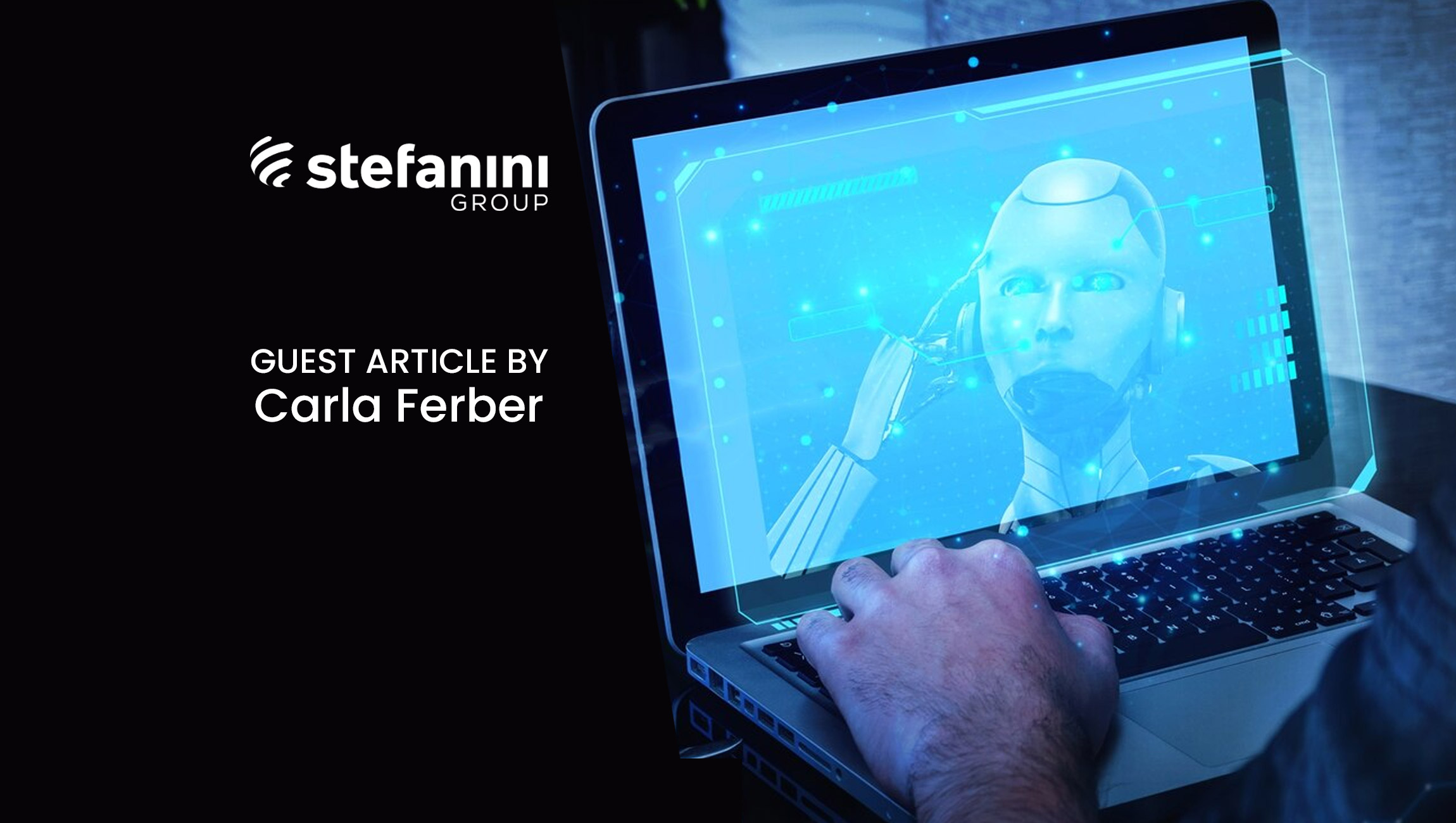Demystifying AI with an AI-created marketing campaign
When ChatGPT took the world by storm in 2022, it was a wakeup call for everyone at Stefanini. As a company that has been using AI to solve our clients’ problems and power our business solutions for more than 15 years, we were very familiar with the AI landscape. But the spike in awareness and the worldwide conversation about AI that ensued was surprising even to us. It highlighted the extent to which these tools and ideas were still really very new to many people. Everyone was talking about AI, but two things seemed clear. One is that, despite all the buzz, lots of people did not have a strong grasp on exactly how to use AI and what it could do for their company. Another is that there was an unusual combination of excitement and fear about AI’s potential. People were genuinely impressed and excited by what AI could do—while also being somewhat fearful about the potential for misuse and the possible implications for an AI-driven future.
From our perspective, there was a real need to address both of those issues with something that would achieve the twin goals of demonstrating the practical utility of AI while also demystifying this extraordinary technology. And what better way to do that than to use AI itself to demonstrate the power and potential of AI solutions to solve real-world problems in a relatable and accessible way? That was achieved with the rollout of a global marketing campaign that is one of the first to be developed entirely from AI tools.
Marketing Technology News: MarTech Interview with Clate Mask, CEO and Co-Founder @ Keap
The Imagine campaign was organized on a framework of problems and solutions. By showing how AI can (and is) being used in practical, usable, and accessible ways to solve real-world problems across a range of different verticals, from banking to logistics, the campaign reinforces the fact that this is not an abstraction or a thought exercise—AI really works. Single-sentence taglines present both problems and solutions, and a series of video presentations for each of what would become ten case studies were infused with consistent visual and storytelling elements to reinforce the fact that these were connected pieces of a cohesive campaign.
Imagine was created exclusively using AI-powered platforms like Midjourney and Pika to create the visuals for the campaign. The development team worked with these tools, shaping the final product to ensure that the campaign had a consistent look and feel. What is exciting—and has important implications for the future of AI in similar spaces—is the extent to which employing these tools saved the team a significant amount of time on their work while still producing high-quality content. And the results were dramatic. Since launching in Q4 2023, the campaign has gone live in 27 countries in the form of digital campaigns, billboards across the U.S. and physical advertisements in major airports around the country. To date, the Imagine campaign has earned 75.5 million impressions and more than 10 million global video views—and counting.
Imagine wasn’t just effective in communicating how AI can be leveraged to solve key business problems. It taught us some invaluable lessons and led to the discovery of new tactics that promise to increase efficiency and quality. It’s not an exaggeration to say that working on this campaign has changed almost everything — from our work processes to the way we design and execute creative work.
Sometimes, in a space like AI, challenges and opportunities are two sides of the same coin—and, without question, there were challenges along the way. This is a space that’s advancing so quickly that new features were being rolled out even as the campaign was being developed—a pace of innovation that is both exciting and challenging. The process of generating images in one AI tool and feeding them into another to create animated sequences came with a substantial technical learning curve. Understanding how to navigate that space and create the right prompts is critical when you are essentially training the program to create the consistent style you’re looking for.
Building original new content by combining publicly available source materials wasn’t just a technical challenge, but also a legal one. Close communication with the legal team to guard against the misuse of proprietary content was (and will remain) essential, even if that meant operating at times in a closed environment. And along the way, the development team was also mindful of the reception that public facing imagery and storytelling would receive. Public comfort level around AI is also evolving, almost in real time. Some of the earliest versions of generative AI assistants were intentionally designed to be clearly cartoonish in order to avoid any discomfort users might experience when engaging with something that seemed almost human. More recently, virtual representations of those same AI assistants have become more realistic to keep pace with growing comfort and familiarity with AI.
Appropriately enough, the process of using AI to promote AI in the Imagine campaign helped identify new tools and unlock new opportunities—echoing the same message that was conveyed in the advertising itself. AI is already so integral to what industry leaders do and how they do it—a part of almost all conversations with clients and integral to the services and solutions those clients are paying for—but it is still a thrill to discover how much there is to learn. When even longtime innovators in the AI space can still geek out about what AI can do right now—future prospects for the application of this technology are virtually limitless.
Marketing Technology News: How Agencies Need to Adopt Growth-Driven Actions to Assist their Clients and Propel their Growth
_________
Also catch; Episode 198: MarTech and AI with Jeff Samuels, COO of Iterable











